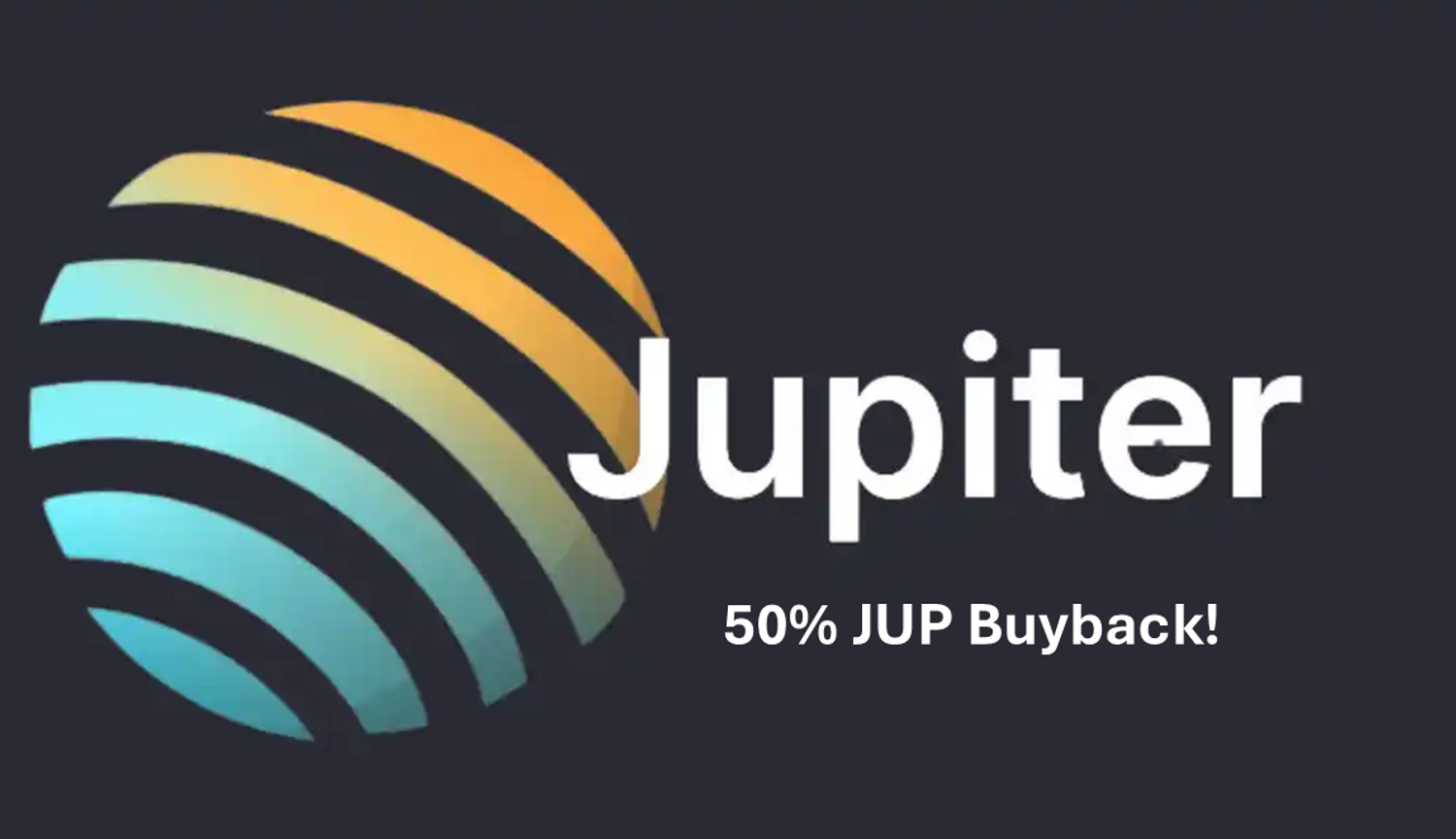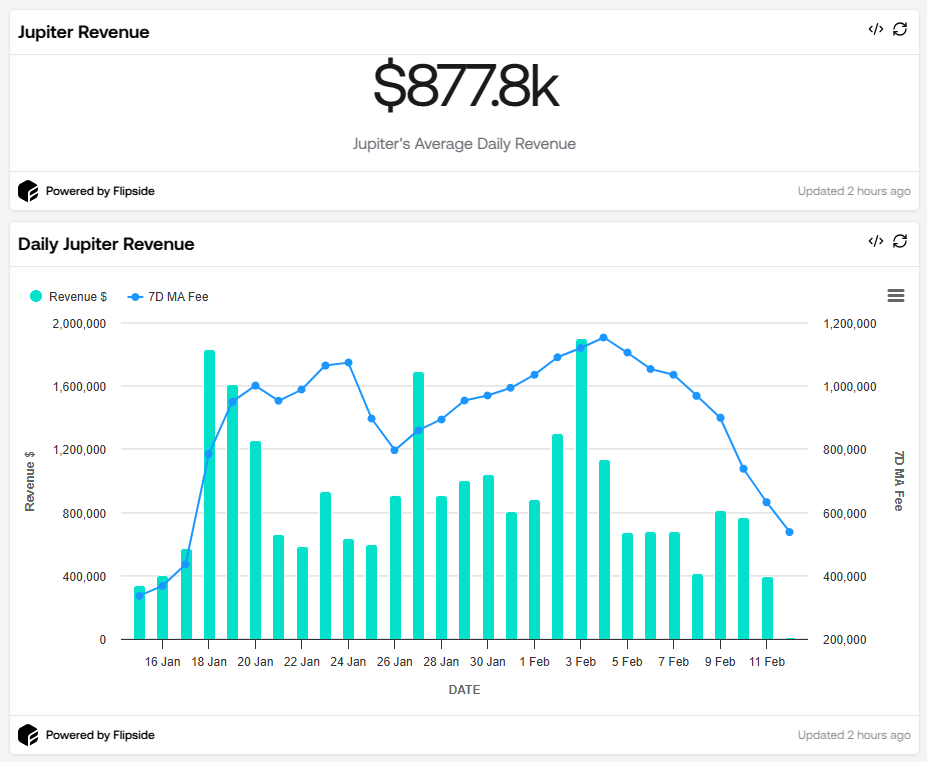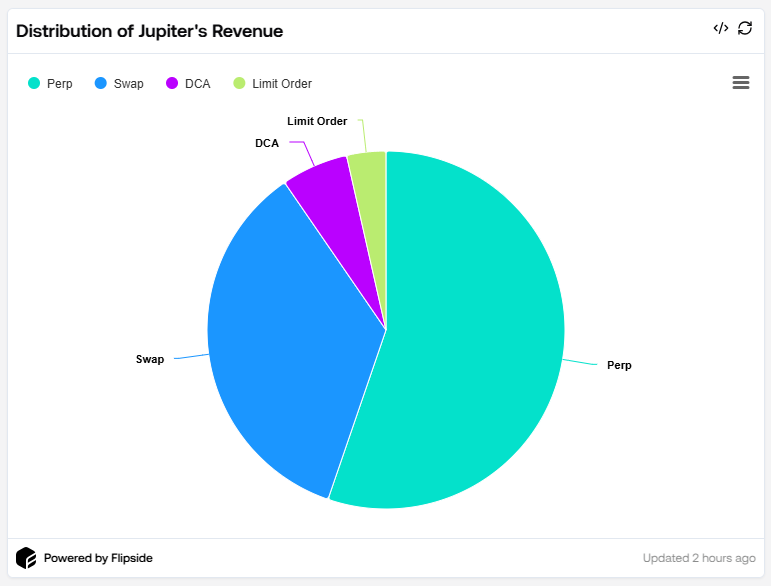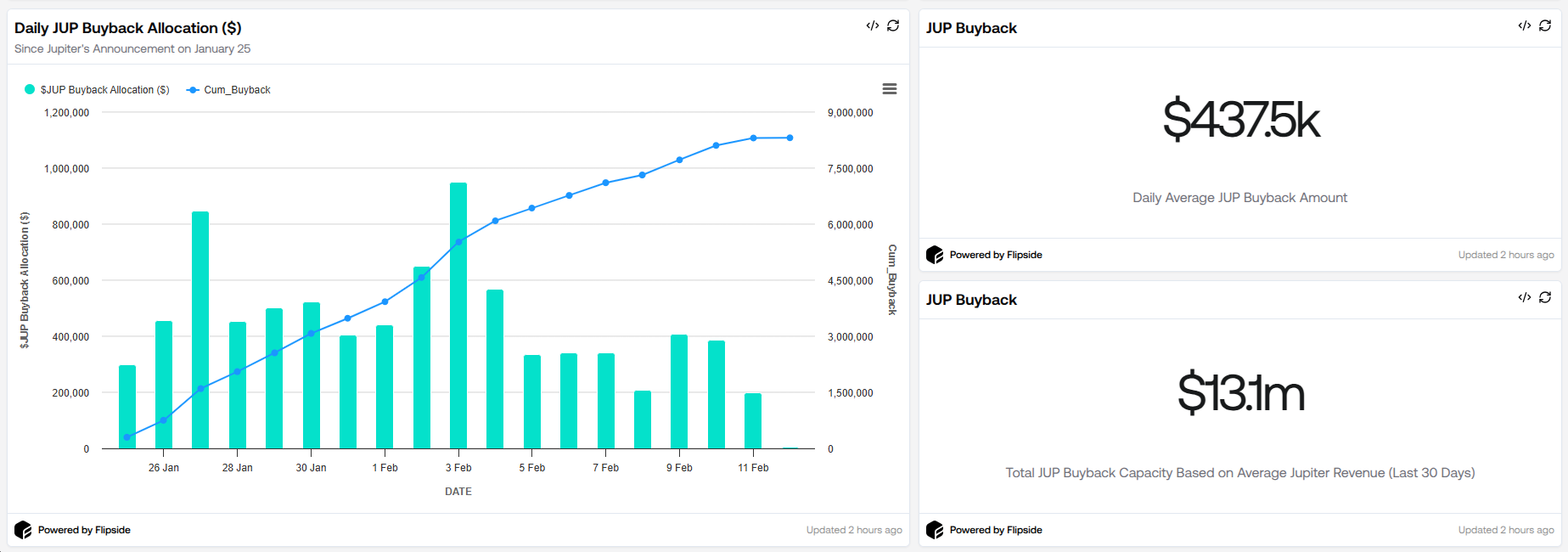
In a move that has garnered significant attention within the decentralized finance (DeFi) community, Jupiter—the leading aggregator on the Solana blockchain—recently announced its decision to allocate 50% of its protocol fees toward buying back its native governance token, JUP.
Jupiter mentioned on X that they’ll share more details about the buyback tomorrow (Feb 13), but before that, let’s take a closer look at the data behind this decision, how the platform generates revenue, and what the buyback could mean for JUP tokenomics and market trends.
Background and Rationale
Jupiter’s announcement on January 26 stands out not just for its scale but for the strategic message it conveys. For the first time, the platform has introduced a 0.1% fee on swaps through its aggregator, creating a new revenue stream. Additionally, by committing to a buyback program that allocates half of its revenue to repurchasing JUP tokens, Jupiter aims to reduce the circulating supply—a move that could potentially support the token’s value over time.
Revenue Insights and Data Analysis

A closer look at Jupiter’s recent financial performance reveals robust revenue generation. Based on Flipside data, over the past 30 days, Jupiter’s average daily revenue has exceeded $877,000, with peak days even reaching more than $1.9 million. This impressive performance is powered by a diversified revenue stream:

-
Perpetual Trading Fees (55.25%): More than half of Jupiter’s revenue comes from perpetual trading fees. However, this only accounts for 25% of the total perpetual fees generated, as the remaining 75% goes to JLP token.
-
Swap Transactions (Over 35%): Swap transactions represent the second-largest contributor to revenue, underscoring the platform’s significant role in facilitating liquidity and trade execution.
-
DCA and Limit Order Trades (6% and 3.5%, respectively): While smaller in comparison, these segments contribute to the overall revenue mix, highlighting the diversity of Jupiter’s trading options.
The Impact of the Buyback

Since the introduction of this strategy, Jupiter’s approach to using its revenue has become particularly interesting. By allocating 50% of its revenue toward buying back tokens, Jupiter has already reached a buyback capacity of over $8.3 million in just 19 days. This translates to an average daily buyback capacity of about $437,000.
If we extend this daily average over a full month, the potential buyback capacity climbs to more than $13.1 million. When you factor in the average price of a JUP token, this means that the strategy could effectively remove over 16 million JUP tokens from circulation every month.
It’ll be interesting to see how the market responds to the buyback program—has JUP’s price already factored in, or will we see a bullish move?
Read more on SolanaFloor



